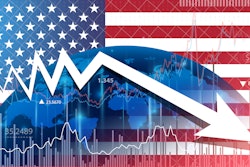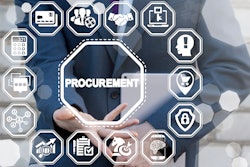
Picture this: after months of navigating backlogs, cost hikes, and delays, your procurement team finally secures a reliable source for a key component of your manufacturing process. The goods ship, cross borders, and arrive on time. But then your tax and finance teams step in, and that's where the friction begins.
Why? Because the shipment has triggered new documentation requirements, duty exposures, and reporting mandates that didn't exist last year. Real-time e-invoicing laws have gone into effect, and trade thresholds have shifted. Suddenly, your business is accountable for a wave of compliance issues that weren't even on the radar at the start of the year.
This shift is no longer hypothetical. It's happening daily, and it’s why supply chain strategy and tax compliance can no longer operate in silos.
Regulatory shifts are redefining supply chain exposure
This year, the U.S. government eliminated the $800 de minimis exemption for goods imported from China and Hong Kong. That policy change, effective as of May 2025, means even low-value shipments are now subject to full customs processing, including duties and paperwork that many businesses have never been equipped to handle. The operational and financial burden has increased significantly for companies importing large volumes of small parcels. As a result, many are reassessing how they structure fulfillment models and last-mile logistics amid the compliance minefield.
Europe is undergoing its own transformation. The EU's VAT in the Digital Age (ViDA) initiative, formally adopted in March 2025, gives member states the authority to roll out mandatory real-time digital reporting and structured e-invoicing. These measures are already beginning to replace legacy post-transaction reporting systems and are pushing companies to rethink how, when, and where they account for tax exposure. The shift is forcing multinational businesses to view tax as an integral part of their digital infrastructure rather than a periodic compliance exercise.
These shifts are not simply new requirements. They represent a fundamental change in how global supply chains trigger and enforce tax obligations.
If you're moving parts from Mexico into the EU, assembling in the United States, and distributing across Southeast Asia, each leg of that journey could activate a different set of tax rules. VAT recovery, customs documentation, and e-invoicing mandates all vary by country, and the rules are continuing to evolve. The days of monthly reconciliation are being replaced by transaction-level accountability, often in real-time and across multiple jurisdictions.
Compliance can no longer be an afterthought
Governments are using technology to gain more visibility into trade, and they are using that visibility to drive strict enforcement of tax laws. Advanced tools like AI-powered denied party screening and real-time tracking systems are increasingly common among regulators, with some agencies leveraging machine learning to detect high-risk transactions before goods even reach their borders. In some cases, authorities may already have access to more accurate transaction data than the business itself. This is a difficult position to be in when audits or disputes arise.
The broader takeaway for global businesses is that tax compliance is no longer isolated from operational planning. These regulatory changes are surfacing in boardroom discussions, shifting how leaders evaluate supply chain risk, technology investment, and even market expansion. Inconsistent compliance no longer just means delayed filings or minor fines. It now carries the potential for shipment delays, revoked import privileges, or costly audits; all outcomes that can disrupt customer relationships and materially impact the bottom line.
Some companies are already adapting by aligning compliance operations with digital transformation initiatives. For example, large manufacturers operating in Brazil, where e-invoicing has been mandatory for years, have built compliance checkpoints into procurement and inventory systems to avoid delays at all stages of production. Their experience offers a model for global enterprises: build compliance into your operational DNA, not around it.
To keep up, compliance cannot, and should not, be treated as a final checkpoint. It needs to be integrated into the foundation of supply chain planning, from sourcing to fulfillment. That level of coordination requires tax, legal, IT, and operations teams to work in sync, not in silos.
It also calls for a more modern infrastructure. Businesses need systems that can capture clean data at the point of transaction, adapt to jurisdiction-specific mandates, and evolve as regulations shift. Patchworked solutions and outdated ERPs are no longer enough.
Turning tax into a competitive edge
What is most important, though, is a mindset shift. Compliance is not just about avoiding penalties. It becomes a source of efficiency, risk mitigation, and competitive advantage – when done right. Businesses proactively integrating compliance into their global operations are positioned to move faster and more confidently than those playing catchup.
Leading organizations will be those that treat compliance not as an obligation, but as an enabler of smarter, faster decision-making. When tax is integrated with supply chain data and forecasting, businesses gain clearer visibility into total landed costs, regulatory exposure, and operational risk. This kind of data-driven insight fuels better planning and hence, better outcomes.
Tax policy is no longer a background issue. It is a defining factor in how supply chains operate and scale. The companies that recognize this shift and build for it will be the ones that lead in the years ahead.



















